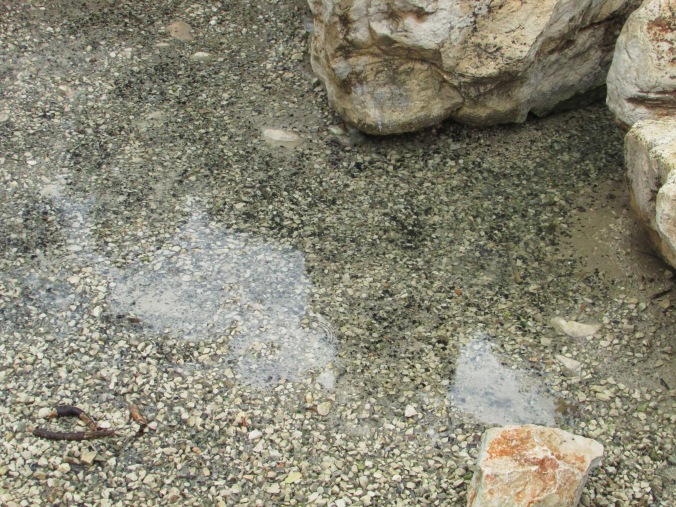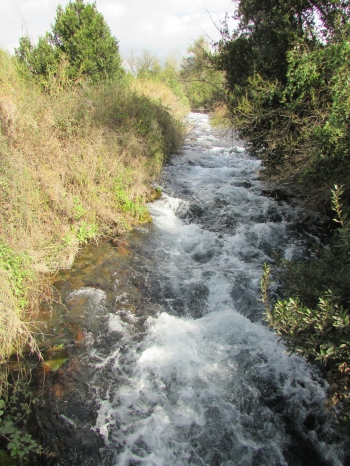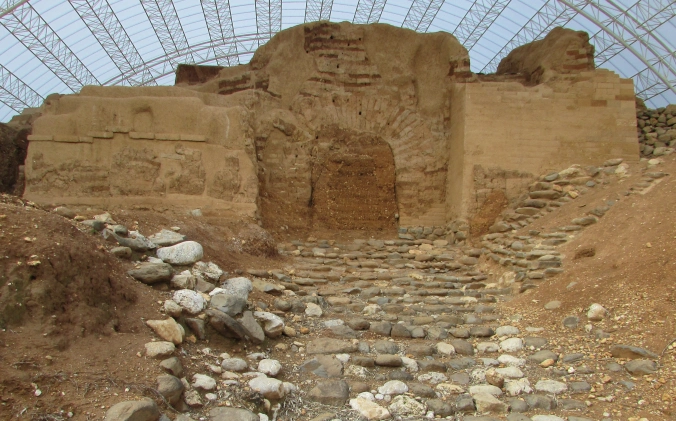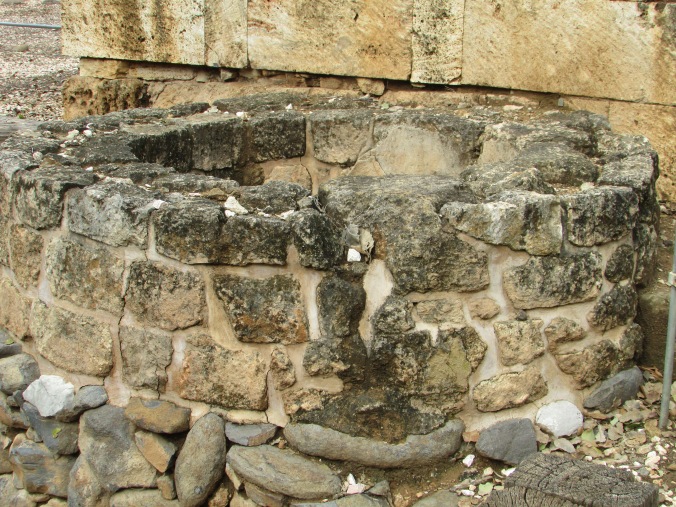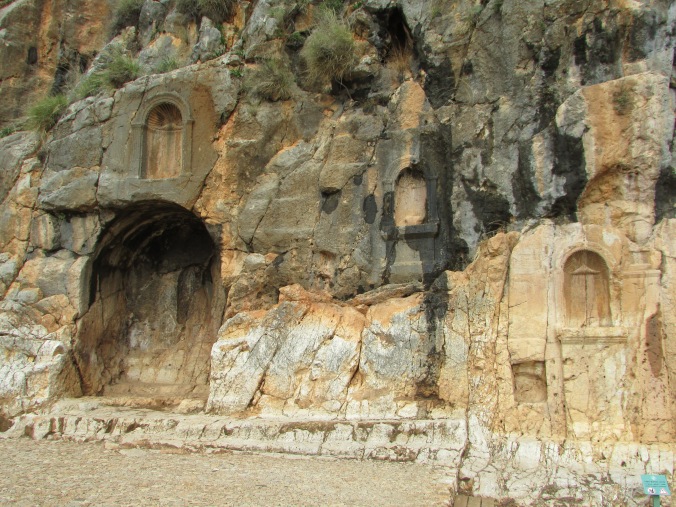After three nights at the Sea of Galilee, we bid it farewell and began our journey south toward the Dead Sea. Our first stop was Bet She’an, Israel’s largest archaeological dig. It was here that the bodies of King Saul and his sons were fastened to the wall after their deaths at the hands of the Philistines on nearby Mount Gilboa. (1 Samuel 31)
Archeologists are still excavating the ruins of the Roman era city of Jesus’ time that was destroyed by an earthquake in 740 AD. Strategically located at the junction of the Jordan River Valley and the Jezreel Valley, it was one of the ten cities of the Decapolis and would have been on the route that Jesus took whenever he travelled from Galilee to Jerusalem.
We started our tour at the impressive Roman theatre. The acoustics are so good that when one member of our group stood on stage and sang the rest of us could hear every word from far up in the bleachers.

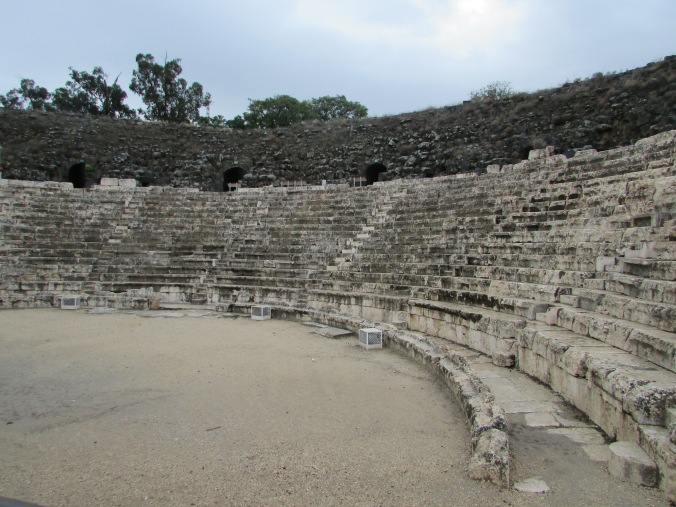
Next we moved on to the extensive bathhouse complex.
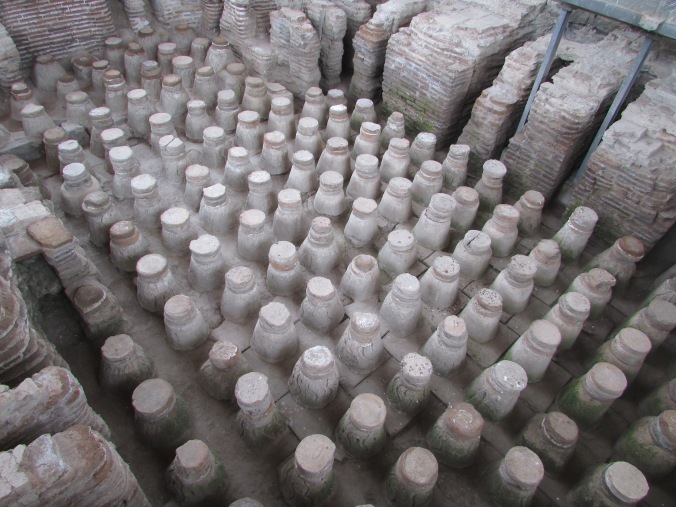
The short pillars in the photo above held the floor of the bath. Hot air piped into the hollow space below the floor heated the water above. As our weather was damp and chilly, we all agreed that a soak in such a bath would have been welcome!
We continued our walk down the stone paved main street. In ancient days, its impressive pillars probably supported a covering over the road.
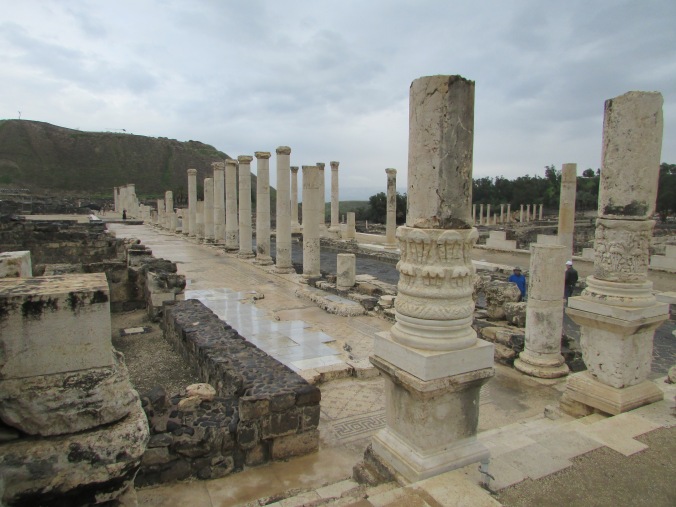
The mosaic pavement of the portico includes this Greek inscription which reads “In the time of Palladius, son of Porphyrus, the most magnificent governor, the work of the stoa together with the mosaic pavement was made.”

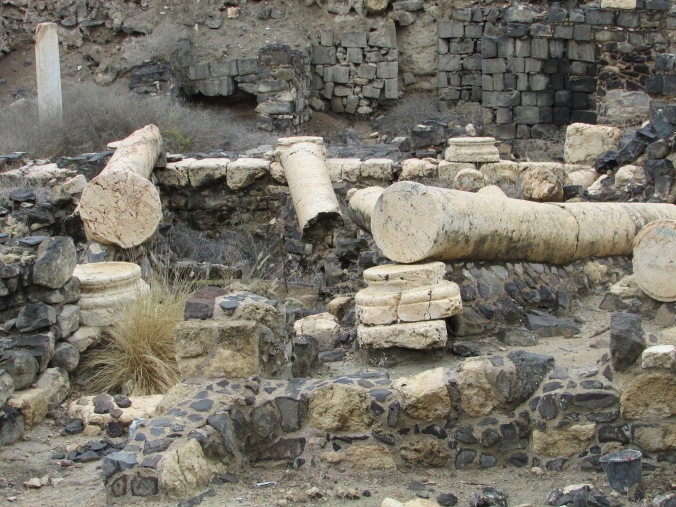
We appreciated the coolness of the day when we climbed the 163 steps to the top of the mound where we saw remains of the hilltop acropolis. From there, we had a spectacular view of the entire site. What was visible was only the downtown portion of the ancient city, however. Most of the residential areas are still under the ground.
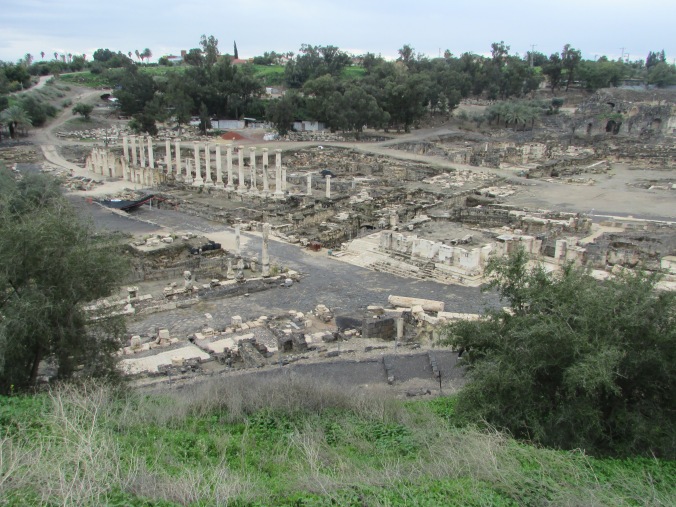
Everywhere we walked, the ground was strewn with tiny bits of pottery. On our way back down the hill, we discovered that recent rains had washed down hundreds of pieces. We immediately became amateur archeologists searching for treasure! Amazingly, we were allowed to take pieces home with us! There are simply so many of them that they are of little value or interest to those who seriously study the site.
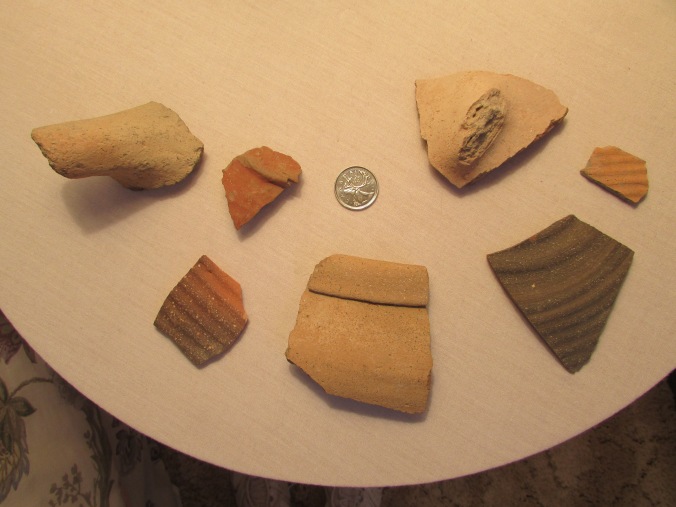
It still astonishes me that I can have in my possession a piece of someone’s kitchenware from a time when people still thought the world was flat! Who was that person? What did she carry in her container? Was she still alive when the earthquake destroyed her city?
Leaving Bet She’an, we traveled next to Harod’s Spring where God instructed Gideon to reduce the size of his army from 32 000 to 300 and gave him victory over the Midianites. (Judges 7) When they were told to drink from the spring, 300 men lapped water with their hands to their mouths while the rest got down on their knees to drink. These were the ones that God told Gideon to take into battle with him. It was pointed out to us that those who used their hands to scoop up the water would have had their eyes forward, alert to their surroundings, while the others had their heads down. We, too, are admonished to be alert, on guard against Satan’s attacks. (1 Peter 5:8) In spite of recent rains, Harod’s Spring was almost dry, but with a bit of imagination, we could visualize what happened there.
